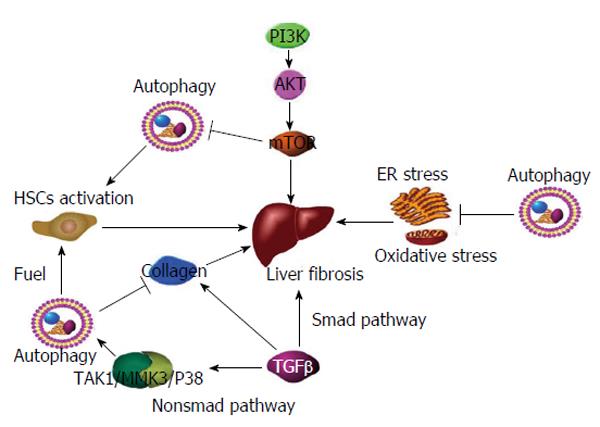Copyright
©The Author(s) 2015.
World J Hepatol. Aug 8, 2015; 7(16): 1982-1986
Published online Aug 8, 2015. doi: 10.4254/wjh.v7.i16.1982
Published online Aug 8, 2015. doi: 10.4254/wjh.v7.i16.1982
Figure 1 Mechanisms involved in autophagy and fibrosis.
(1) Phosphoinositide 3-kinase promotes phosphorylation of AKT, which subsequently leads to stimulation of mTOR and inhibition of autophagy. mTOR activation promotes hepatic fibrosis; (2) Autophagy fuels HSC activation, leading to hepatic fibrosis; (3) TGF-β promotes collagen synthesis and fibrosis via the Smad pathway. Furthermore, TGF-β stimulates autophagy via the non-Smad TAK1/MMK3/P38 pathway, leading to collagen degradation and fibrosis reduction; and (4) Autophagy attenuating ER stress and oxidative stress, and ultimately reduces fibrosis. mTOR: Mammalian target of rapamycin; HSC: Hepatic stellate cells; TGF-β: Transforming growth factor-β; TAK1/MMK3/P38: TGF-β-activated kinase 1-MAPK kinase 3-p38.
- Citation: Mao YQ, Fan XM. Autophagy: A new therapeutic target for liver fibrosis. World J Hepatol 2015; 7(16): 1982-1986
- URL: https://www.wjgnet.com/1948-5182/full/v7/i16/1982.htm
- DOI: https://dx.doi.org/10.4254/wjh.v7.i16.1982













